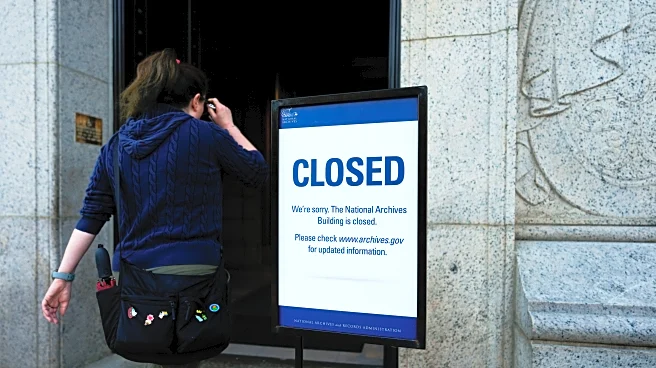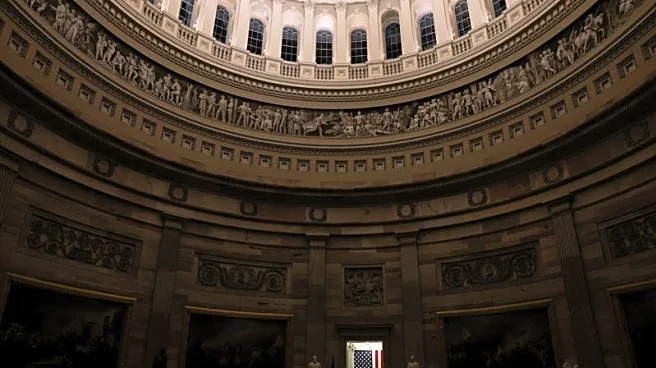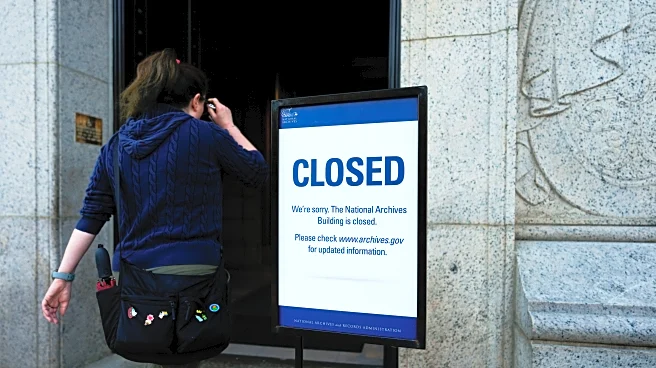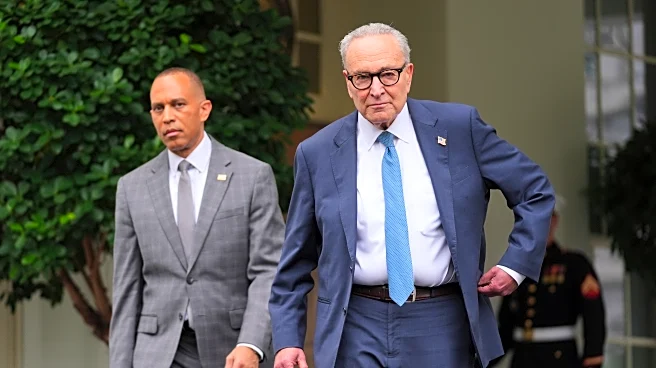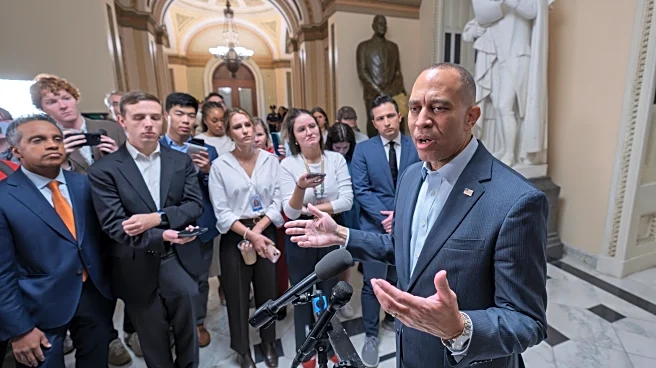What's Happening?
The U.S. government has entered a shutdown following the inability of President Trump and Congress to agree on funding measures. The shutdown commenced at 12:01 a.m. after the Senate failed to pass two partisan bills aimed at securing government funding. This development marks a significant impasse between the executive branch and legislative leaders, with both sides unable to reconcile differences over budget allocations. The White House has indicated that layoffs are imminent as a result of the shutdown, which could affect various federal agencies and services.
Why It's Important?
The government shutdown has immediate and far-reaching implications for federal employees, government operations, and the broader U.S. economy. Federal workers face potential furloughs, and essential services may be disrupted, affecting millions of Americans who rely on government programs. The shutdown also underscores the deep political divisions in Washington, which could have long-term effects on public trust in government institutions. Economically, prolonged shutdowns can lead to decreased consumer confidence and potential negative impacts on financial markets.
What's Next?
As the shutdown continues, pressure will mount on both President Trump and Congress to reach a compromise. Negotiations are expected to resume, with potential for bipartisan discussions to find a resolution. Stakeholders, including federal employees, businesses, and the public, will be closely monitoring developments. The outcome of these negotiations could set a precedent for future budgetary discussions and influence the political landscape ahead of upcoming elections.



